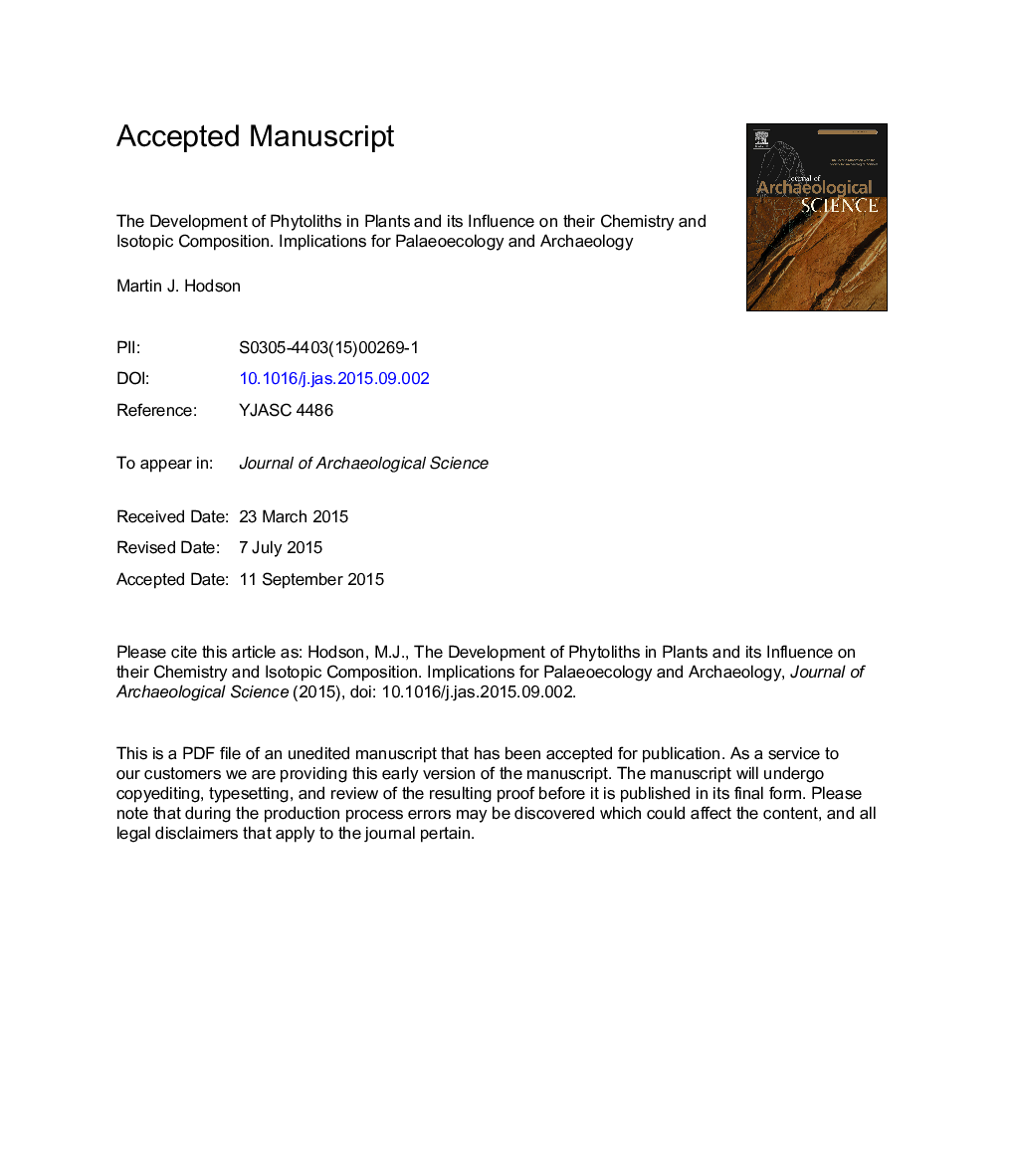| Article ID | Journal | Published Year | Pages | File Type |
|---|---|---|---|---|
| 7441451 | Journal of Archaeological Science | 2016 | 31 Pages |
Abstract
Relatively little is known about how phytoliths develop and form in the plant. We will consider the development of phytoliths where silica is deposited in the cell wall and those where it is deposited in the cell lumen. The cellular environment in which phytoliths develop affects their chemistry. In cell wall phytoliths, silica is deposited onto a carbohydrate matrix which gives the silica some order. Lumen phytoliths would be expected to contain more lipids, proteins and possibly nucleic acids than cell wall phytoliths. The chemical structure of the silica in phytoliths, other elements within their structure (calcium, aluminium, carbon, nitrogen), and isotopes of silicon, oxygen, and carbon may all give information beyond the more usual morphological analysis. There is increasing interest in using these features as proxies in palaeoecological and archaeological research.
Related Topics
Physical Sciences and Engineering
Materials Science
Materials Science (General)
Authors
Martin J. Hodson,
